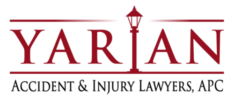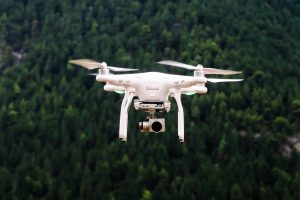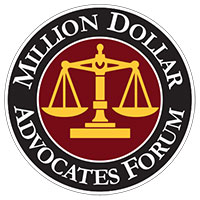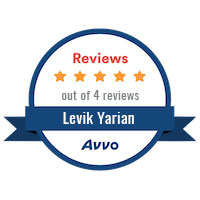Burbank Drone Accident Lawyers
The use of commercial drones and unmanned aerial vehicles is becoming more popular. Drones can be used for studying weather systems, performing surveillance, or orchestrating targeted attacks. Even law enforcement agencies throughout the greater Los Angeles County area are beginning to use drones.
Sometimes drones malfunction, or are not properly maintained or operated by their owners. Drones can fall at high velocities leading to significant bodily harm. A drone accident can be harmless, but at times it can result in broken teeth, fractures, jaw injuries, or traumatic brain injuries (TBIs).
At Yarian Accident & Injury Lawyers, APC, our personal injury attorneys recognize that a drone can cause serious personal injuries. We help our client pursue financial compensation after the negligence of another person who operates a drone in a negligent manner.
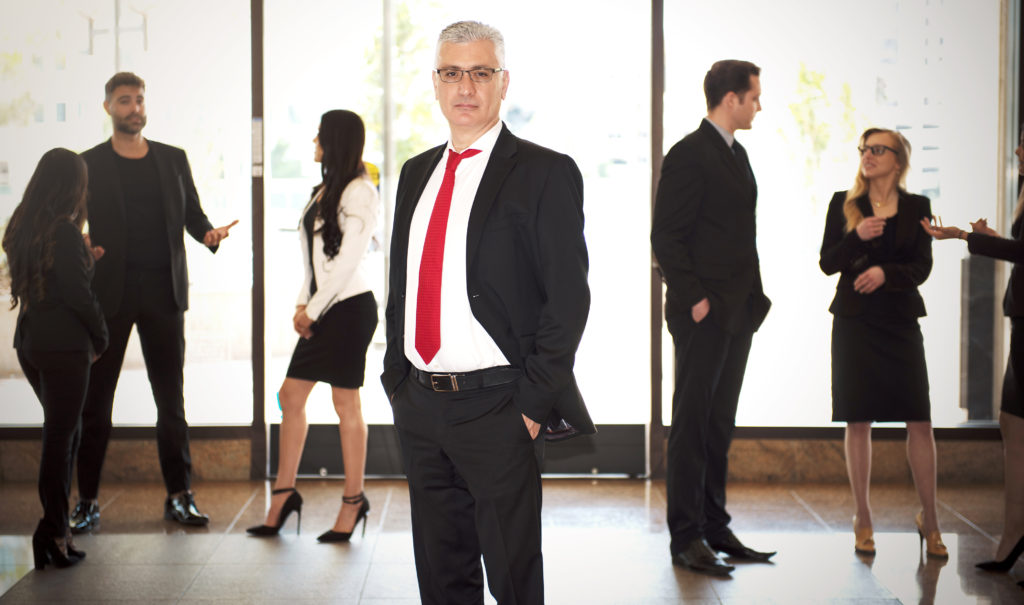
Lawyer for Drone Accidents in Los Angeles, California
At Yarian Accident & Injury Lawyers, APC, we know the hazards that drones pose. These accidents can cause serious injury to residents of Burbank, Los Angeles, Long Beach, and the surrounding areas in Southern California. We want to help you recover, call Yarian Accident & Injury Lawyers, APC to see if you qualify for compensation.
The attorneys at Yarian Accident & Injury Lawyers, APC understand drone accidents can cause substantial injury. We are experienced with nearly two decades of experience in the personal injury field.
Do not let another’s negligence affect your future. Contact an attorney by phone (844)291-1911 to let us evaluate and file your claim.
Overview of Drone Accidents in California
What can a Drone Be used for?
A drone can be used for a variety of purposes. It is typically either used in a civil, public, or recreational role. A drone used by a public facility is operated by the U.S. government and must be issued a Certificate of Waiver or Authorization (COA) to permit use.
Drones used for civil reasons are controlled by commercial companies. A commercial company must have approval under Public Law 112-95 sec. 333 or Special Airworthiness Certificate (SAC). Lastly, drones can be used by any sort of enthusiast. Recreational use does not have to be registered, however, there are specific guidelines drone users must follow.
Some drones even carry out multiple roles based on the situation. Examples of common drone use include:
- Photo or Video Drones – Drones can often capture aerial shots that difficult to obtain for amateur filmmakers. This makes it easier and cheaper for directors to achieve the shots they want without the use of a helicopter;
- Delivery Drones – Most delivery drones are strictly for government and military use. However, as drones popularity increases commercial companies such as Amazon plan to use drones in their future business models;
- Monitoring Drones – If a drone has an infrared camera attached, they can be used to monitor a certain area. Sometimes it’s deployed for scientific research, other times it is to prevent crime;
- Attack Drones – The U.S. military does arm drones. If a drone is armed it is an attack drone used to control air strikes in hostile or inaccessible areas; and
- Crowd Control Drones – Often a crowd control drone will be equipped with tear gas or sound cannons. These sorts of drones are used to disperse large crowds without inputting another person in an unsafe situation, and without harm to the crowd.
FAA Regulations for Drones in California
According to Federal Aviation Administration (FAA) statistics, pilots reported over 700 drone near misses between January and August of 2015. Additionally, the FAA documented that at the least a dozen drones interfered with a military aircraft. With more than 400,000 people with drones registered, accidents and close-calls are becoming more common every day.
The FAA issued regulations to control the usage of drones and protect the military or general public. New drone regulations establish the following key requirements:
- Drone pilots need to keep the unmanned aircraft within visual line of sights. Even if the pilot has a “first-person view” to peer in, they must keep unaided sight on the drone. Neither the drone pilot nor a visual observer can use more than one UAS operation at a time;
- The maximum height a drone can reach is 400 feet. Drones must have a cap of speed for 100 miles per hour;
- Drone pilots fly in a Class G airspace. They are permitted to do without the permission of air traffic control. Any drone pilot occupying Class E, D,C or B airspace needs approval from air traffic control;
- Drone operators can affix external loads to their aircraft. The load however must be securely attached and not affect flight. An operator can only transport their loads within state boundaries, and the attached items must weigh less than 55 pounds;
- A drone can only be used during daylight hours or during twilight. A drone used during twilight hours must be equipped with “anti-collision lights”; and
- Drone operators must always avoid manned aircrafts. They are required to use their drone respectively, and not operate it in a reckless or careless manner.
Drones for Commercial Use in California
FAA drone regulations state that a business or commercial venture must follow certain regulations. Firstly, they must qualify for a waiver through the FAA to bypass recreational standards. Commercial businesses must prove their drones are safe.
A person who wants to operate a commercial drone must obtain a pilot airman certificate with a small UAS rating. Another option is to work under the supervision of a pilot who already has their certification.
For a person to qualify for a pilot airman certification they must do the following:
- Be 16 years of age or older;
- Pass an entail aeronautical knowledge test at an FAA-approved knowledge center;
- If you already have a Part 61 pilot certificate, you must complete a flight review within the previous 24 months; and
- Required to take a FAA UAS training course.
Drones for Recreational Use in California
Any hobbyist who would like to fly a drone for recreational purposes does not need to seek the FAA. Instead, they are required to register their unmanned aircraft system (UAS) if it is more than .55 pounds. Pilot operators are also required to label their UAS with a registration number and must understand drone safety guidelines.
A recreational drone operator is forbidden from violating the following restrictions:
- Keeping the drone in their line of sight;
- Flying in excess of 400 ft;
- They must avoid manned aircrafts;
- Cannot fly their drone over groups of people;
- Never fly their drone under the influence of drugs or alcohol;
- Avoid flying near emergency response units;
- Can not fly over stadiums or public gathers; and
- Keep their drone away from flying over groups of people.
No-Fly Zones for UAS in California
Federal law states that a drone cannot fly in certain specific areas. A few drone no-fly zones include:
- Temporary Flight Restrictions – Some areas are restricted to fly in by the FAA. Disneyland for example, is not allowed to fly a UAS over. Some others may be events such as an air show, Presidential visits, or concerts. The FAA publishes their flight restriction zones on their websites;
- Airports – Drone pilots must be at least five miles away from any airports. If they are closer, the guidelines state they must give notice to air traffic control beforehand;
- National Parks – Flying over a National Park Service is prohibited under FAA laws;
- Prohibited or Restricted Airspace – Some prohibited airspaces may be the White House or Camp David. Normally a restricted air space is a military base or where there are hazardous flight conditions; and
- NOAA Marine Protection Areas – The National Oceanic Atmospheric Administration prohibits certain flights of drones over protected areas.
Steps to Filing a Drone Injury Lawsuit
If a person wants to file a drone lawsuit, they should take certain actions including:
- Write down the drone’s registration number if possible;
- File a police report to document the event;
- Collect all medical paperwork from your injury caused by the drone;
- Collect contact information from witnesses of the accident; and
- Contact an experienced personal injury attorney.
Since drones accidents are a new phenomenon, there are not many criminal statutes regarding UAS. However, operators may be criminally responsible under existing laws including:
- Trespass or Invasion of Privacy;
- Stalking;
- Disorderly Conduct or Concealed Recording; and
- Eavesdropping
This applies especially to any individual who feels as if they were harassed by a drone. If they choose to shoot it down and it results in an injury, the person may be qualified for compensation.
Additional Resources
Drone Crashes into Power Lines, West Hollywood Cracks Down – Visit the LA Times website and read an article written by Hailey Branson-Potts. A drone has flown into a power line and created a mass power outage for West Hollywood residents. Ms. Branson-Potts discusses West Hollywood’s City Council’s actions to prevent accidents afterward.
Federal Aviation Administration – Visit the Federal Aviation Administration’s (FAA) website to read about the different regulations regarding drones. Apply to register a drone, and see if you are eligible to operate one.
L.A. Attorney Files Criminal Charges Under New Drone Ordinance – Visit the LA Times article written by James Queally. See how two men flew drones in the vicinity of a hospital and police heliports. Learn about the new ordinance the City Council unanimously approved in October due to the offense.
Locating an Attorney for Drone Accidents in L.A., California
Drone accidents are uncommon. However, they should not be taken lightly. A drone accident can result in serious bodily injury and leave lasting effects. The high speeds and heights of some drones can create severe impacts. Drone accidents can include motor vehicle accidents and injuries from falling debris.
We care about you and helping your process of recovery. Dial (818) 459-4999 or submit an online contact form today.
Yarian Accident & Injury Lawyers Burbank Office
700 N Central Ave Suite 470
Burbank, CA 91203
(818) 459-4999
